How to Use Claude 3 Sonnet with Amazon Bedrock?
How to Use Claude 3 Sonnet with Amazon Bedrock? The field of artificial intelligence (AI) has witnessed a remarkable surge in recent years, with advancements in natural language processing (NLP) and machine learning (ML) reshaping the way we interact with technology.
Among the pioneers in this domain is Anthropic, a renowned AI research company that has introduced Claude 3 Sonnet, a cutting-edge foundation model that promises to revolutionize the AI landscape.
Recognizing the immense potential of Claude 3 Sonnet, Amazon has integrated this powerful AI model into its Amazon Bedrock platform, enabling businesses and developers to harness its capabilities with ease.
This article will serve as a comprehensive guide, exploring the intricacies of using Claude 3 Sonnet with Amazon Bedrock, from setup and configuration to practical applications and best practices.
Understanding Claude 3 Sonnet
Before delving into the specifics of using Claude 3 Sonnet with Amazon Bedrock, it is crucial to understand the underlying technology and its capabilities. Claude 3 Sonnet is a next-generation AI assistant developed by Anthropic, built upon the company’s extensive research into training AI systems.
At its core, Claude 3 Sonnet is a foundation model, a term used to describe large language models that can be adapted and fine-tuned for various tasks and applications. It is designed to be highly versatile, capable of handling a wide range of tasks, from data processing and analysis to code generation and creative writing.
One of the most notable features of Claude 3 Sonnet is its blistering speed. Anthropic claims that this model is twice as fast as its previous offerings, Claude 2 and Claude 2.1, while maintaining the same level of intelligence. This remarkable feat is achieved through advanced optimization techniques and cutting-edge hardware acceleration.
Furthermore, Claude 3 Sonnet excels at producing JSON outputs, a format widely used in web development and data exchange. This capability streamlines the process of building applications that rely on structured data, making it easier for developers to integrate Claude 3 Sonnet into their projects.
Amazon Bedrock: A Powerful Platform for AI Deployment
Amazon Bedrock is a comprehensive platform designed to simplify the deployment and management of AI models at scale. By making Claude 3 Sonnet available on this platform, Anthropic has opened the door for businesses and developers to leverage the power of this advanced AI model with ease.
One of the key advantages of deploying Claude 3 Sonnet on Amazon Bedrock is the ability to scale resources dynamically, ensuring that the model can handle fluctuating workloads without compromising performance or accuracy. Additionally, Amazon Bedrock provides robust security features, ensuring that sensitive data and model outputs remain protected.
Setting Up Claude 3 Sonnet on Amazon Bedrock
To begin using Claude 3 Sonnet on Amazon Bedrock, you’ll need to follow a few simple steps:
- Create an Amazon Web Services (AWS) Account: If you don’t already have an AWS account, you’ll need to create one. This process is straightforward and can be completed online.
- Access the Amazon Bedrock Console: Once you have an AWS account, navigate to the Amazon Bedrock console, which is the central hub for managing your AI models and resources.
- Subscribe to the Claude 3 Sonnet Model: Within the Amazon Bedrock console, search for the Claude 3 Sonnet model and subscribe to it. This will grant you access to the model and its associated resources.
- Configure Your Environment: Depending on your specific use case, you may need to configure your development environment or set up necessary infrastructure components. Amazon Bedrock provides documentation and examples to guide you through this process.
- Authenticate and Deploy: Before you can start using Claude 3 Sonnet, you’ll need to authenticate your AWS credentials and deploy the model to your desired environment (e.g., a serverless function, a container, or an EC2 instance).
Throughout the setup process, Amazon Bedrock provides comprehensive documentation, tutorials, and support resources to ensure a smooth and seamless experience. Additionally, the platform offers pre-configured templates and sample code to help you get started quickly.
Integrating Claude 3 Sonnet into Your Applications
Once you’ve successfully set up Claude 3 Sonnet on Amazon Bedrock, you can begin integrating its capabilities into your applications. The integration process will vary depending on your specific use case and the programming language or framework you’re using.
Amazon Bedrock provides a range of software development kits (SDKs) and client libraries that simplify the integration process. These resources offer pre-built functions and APIs that abstract away the complexities of interacting with the Claude 3 Sonnet model, allowing you to focus on developing your application logic.
Here’s a high-level overview of the integration process:
- Define Your Use Case: Clearly define the specific task or problem you want to solve using Claude 3 Sonnet. This could be anything from text generation and data analysis to code generation or creative writing.
- Prepare Your Data: Depending on your use case, you may need to preprocess your data or format it in a way that Claude 3 Sonnet can understand. This may involve tasks such as text tokenization, encoding, or feature extraction.
- Invoke the Claude 3 Sonnet Model: Using the appropriate SDK or client library, you can invoke the Claude 3 Sonnet model and provide it with the necessary input data. This process typically involves making an API call or using a provided function or method.
- Process and Interpret the Output: Once the model has processed your input, it will return the output in the format you specified (e.g., JSON). You’ll need to interpret and process this output according to your application’s requirements.
- Integrate the Output into Your Application: Finally, you’ll need to seamlessly integrate the output from Claude 3 Sonnet into your application’s user interface, backend logic, or other relevant components.
Throughout the integration process, it’s essential to follow best practices, such as proper error handling, input validation, and output sanitization, to ensure the reliability and security of your application.
Practical Applications of Claude 3 Sonnet
The versatility of Claude 3 Sonnet makes it suitable for a wide range of applications across various industries. Here are some practical examples of how you can leverage the power of this AI model:
Data Processing and Analysis
With its vast knowledge base and advanced natural language processing capabilities, Claude 3 Sonnet can quickly process and analyze large volumes of data, extracting valuable insights and patterns that would be challenging for humans to discern. This could include tasks such as sentiment analysis, topic modeling, and text summarization.
Sales and Customer Support
Claude 3 Sonnet’s ability to understand and respond to natural language queries makes it an ideal assistant for sales teams and customer support representatives. It can provide personalized recommendations, answer complex queries, and facilitate seamless communication with customers.
Code Generation and Software Development
Leveraging its deep understanding of programming languages and software development principles, Claude 3 Sonnet can assist developers in generating code snippets, debugging issues, and even drafting entire applications, significantly accelerating the development process.
Creative Writing and Content Generation
Claude 3 Sonnet’s language generation capabilities extend beyond technical domains. It can be employed for creative writing tasks, such as generating stories, poems, and even marketing copy, opening new avenues for content creators and marketers.
Chatbots and Virtual Assistants
With its natural language understanding and generation abilities, Claude 3 Sonnet can be used to build intelligent chatbots and virtual assistants that can engage in human-like conversations, providing personalized support and guidance to users.
These are just a few examples of the practical applications of Claude 3 Sonnet. As the adoption of AI continues to grow, new and innovative use cases will undoubtedly emerge, further expanding the potential of this powerful technology.
Best Practices and Considerations
While the integration of Claude 3 Sonnet with Amazon Bedrock offers numerous benefits, it’s essential to follow best practices and consider potential challenges to ensure a successful and responsible implementation.
Security and Privacy
When working with AI models like Claude 3 Sonnet, it’s crucial to prioritize security and privacy. Amazon Bedrock provides robust security features, such as encryption at rest and in transit, access control mechanisms, and secure networking options. However, it’s still important to follow industry best practices for data protection and secure coding practices.
Responsible AI and Ethical Considerations
As with any powerful technology, the deployment of Claude 3 Sonnet raises important ethical considerations. Anthropic has placed a strong emphasis on responsible AI development, prioritizing transparency, accountability, and the mitigation of potential risks and biases.
When integrating Claude 3 Sonnet into your applications, it’s essential to consider the potential impact on society and individuals. This may include implementing safeguards to prevent the generation of harmful or offensive content, as well as mechanisms for monitoring and auditing the model’s outputs.
Performance and Cost Optimization
While Claude 3 Sonnet offers exceptional speed and performance, it’s important to optimize your applications for cost-effectiveness and efficiency. Amazon Bedrock provides various tools and best practices for monitoring resource utilization, autoscaling, and cost optimization.
Additionally, you may want to consider techniques like model distillation or quantization to reduce the computational requirements and associated costs of using Claude 3 Sonnet, without significantly sacrificing performance.
Continuous Learning and Iteration
AI models like Claude 3 Sonnet are not static entities; they require continuous learning and iteration to maintain their relevance and accuracy. As new data and use cases emerge, it’s important to regularly fine-tune and update the model to ensure it remains aligned with your evolving requirements.
Amazon Bedrock provides mechanisms for model versioning and deployment, allowing you to easily update and manage different versions of Claude 3 Sonnet as needed.
Collaboration and Community Support
Leveraging the power of Claude 3 Sonnet with Amazon Bedrock is a journey that involves continuous learning and collaboration. Engaging with the wider AI community, participating in forums and discussions, and staying up-to-date with the latest developments can help you overcome challenges, explore new applications, and optimize your implementations.
Both Anthropic and Amazon offer extensive documentation, tutorials, and support resources to assist you throughout the integration process. Additionally, there are numerous online communities and forums dedicated to AI and cloud computing, where you can seek guidance, share insights, and contribute to the collective knowledge.
Conclusion
The integration of Claude 3 Sonnet with Amazon Bedrock represents a significant milestone in the AI landscape, enabling businesses and developers to harness the power of this advanced AI model with ease. By following the steps outlined in this guide, you can successfully set up, integrate, and leverage Claude 3 Sonnet to unlock new levels of efficiency, innovation, and competitive advantage.
As the adoption of AI continues to accelerate, it is essential to embrace cutting-edge technologies like Claude 3 Sonnet while adhering to ethical principles and responsible practices. By leveraging the capabilities of this powerful AI model on a robust platform like Amazon Bedrock, you can explore new frontiers and drive transformative change across various industries and applications.
Related


